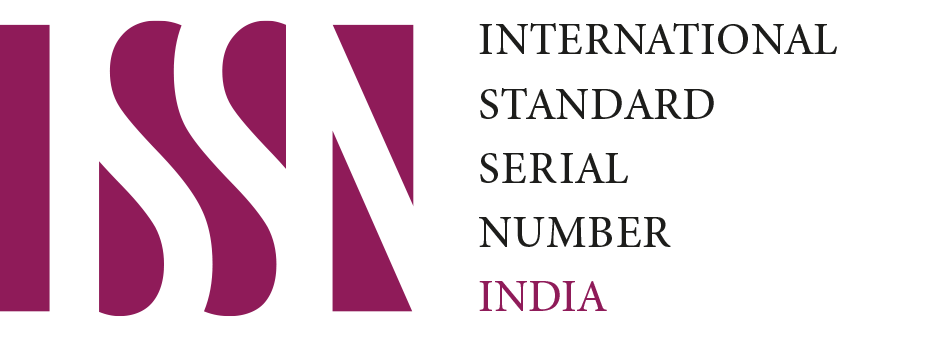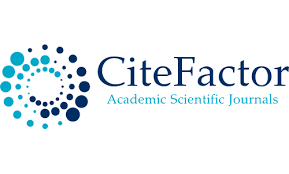Pre-processing of digital images to improve the efficiency of liver fat analysis
Boboyorov Sardor Uchqun o‘g‘li
Tashkent Medical Academy Termiz branch, Uzbekistan
Lyubchenko Valentin
Department of Informatics, Kharkiv National University of Radio Electronics, Ukraine
Lyashenko Vyacheslav
Department of Media Systems and Technology, Kharkiv National University of Radio Electronics, Ukraine
Keywords: Analysis, Diagnostics, Medicine, Liver, Image processing techniques, Pre-processing, Microscopic image
Abstract
Research based on digital image analysis is widely used in medical diagnostics. This allows you to study the problem in detail and possibly without surgical intervention. We can get information about the microcosm and justify the necessary treatment options. Such a study of the task at hand also contributes to obtaining additional information as a result of a more detailed analysis. It is also possible to conduct a comparative analysis, which is important in the diagnostic process. However, in order to produce the most reliable results, it is important to have a good quality digital image. There should be no interference or distortion here. For these purposes, special methods of pre-processing of medical images are used. This allows you to significantly improve the quality of the input image. As a specific example, we consider digital images of fatty liver lesions taken under a microscope. The paper presents real medical images and the results of their analysis after pre-processing and searching for lesions.
References
Lyashenko, V. V., Babker, A. M. A. A., & Kobylin, O. A. (2016). The methodology of wavelet analysis as a tool for cytology preparations image processing. Cukurova Medical Journal, 41(3), 453-463.
Dougherty, G. (2009). Digital image processing for medical applications. Cambridge University Press.
Park, S., Pantanowitz, L., & Parwani, A. V. (2012). Digital imaging in pathology. Clinics in laboratory medicine, 32(4), 557-584.
Lyubchenko, V., & et al.. (2016). Digital image processing techniques for detection and diagnosis of fish diseases. International Journal of Advanced Research in Computer Science and Software Engineering, 6(7), 79-83.
Lyashenko, V. V., Matarneh, R., Kobylin, O., & Putyatin, Y. P. (2016). Contour Detection and Allocation for Cytological Images Using Wavelet Analysis Methodology. International Journal, 4(1), 85-94.
Mousavi, S. M. H., Lyashenko, V., & Prasath, S. (2019). Analysis of a robust edge detection system in different color spaces using color and depth images. Компьютерная оптика, 43(4), 632-646.
Rezaeilouyeh, H., Mollahosseini, A., & Mahoor, M. H. (2016). Microscopic medical image classification framework via deep learning and shearlet transform. Journal of Medical Imaging, 3(4), 044501-044501.
Dey, N., & et al.. (2015). Digital analysis of microscopic images in medicine. Journal of Advanced Microscopy Research, 10(1), 1-13.
Raza, S. E. A., & et al.. (2019). Micro-Net: A unified model for segmentation of various objects in microscopy images. Medical image analysis, 52, 160-173.
Orobinskyi, P., Deineko, Z., & Lyashenko, V. (2020). Comparative Characteristics of Filtration Methods in the Processing of Medical Images. American Journal of Engineering Research, 9(4), 20-25.
De Zeng, M., & et al.. (2008). Guidelines for the diagnosis and treatment of nonalcoholic fatty liver diseases. Journal of digestive diseases, 9(2), 108-112.
Mousavi, S. M. H., Victorovich, L. V., Ilanloo, A., & Mirinezhad, S. Y. (2022, November). Fatty Liver Level Recognition Using Particle Swarm optimization (PSO) Image Segmentation and Analysis. In 2022 12th International Conference on Computer and Knowledge Engineering (ICCKE) (pp. 237-245). IEEE.
Rinella, M. E. (2015). Nonalcoholic fatty liver disease: a systematic review. Jama, 313(22), 2263-2273.
Boboyorov Sardor Uchqun o'g'li, Lyubchenko Valentin, & Lyashenko Vyacheslav. (2023). Image Processing Techniques as a Tool for the Analysis of Liver Diseases. Journal of Universal Science Research, 1(8), 223–233.
Jeyavathana, R. B., Balasubramanian, R., & Pandian, A. A. (2016). A survey: analysis on pre-processing and segmentation techniques for medical images. International Journal of Research and Scientific Innovation (IJRSI), 3(6), 113-120.
Vocaturo, E., Zumpano, E., & Veltri, P. (2018, December). Image pre-processing in computer vision systems for melanoma detection. In 2018 IEEE International Conference on Bioinformatics and Biomedicine (BIBM) (pp. 2117-2124). IEEE.
Ramani, R., Vanitha, N. S., & Valarmathy, S. (2013). The pre-processing techniques for breast cancer detection in mammography images. International Journal of Image, Graphics and Signal Processing, 5(5), 47-54.
Hussein, Z. R., & et al.. (2009). Pre-processing Importance for Extracting Contours from Noisy Echocardiographic Images. International Journal of Computer Science and Network Security (IJCSNS), 9(3), 134-137.
Masoudi, S., & et al.. (2021). Quick guide on radiology image pre-processing for deep learning applications in prostate cancer research. Journal of Medical Imaging, 8(1), 010901-010901.
Qian, Z., & et al.. (2020). A new approach to polyp detection by pre-processing of images and enhanced faster R-CNN. IEEE Sensors Journal, 21(10), 11374-11381.
Escobar, M. M. (2008). An interactive color pre-processing method to improve tumor segmentation in digital medical images. Iowa State University.
Tahseen A. J. A., & et al.. (2023). Binarization Methods in Multimedia Systems when Recognizing License Plates of Cars. International Journal of Academic Engineering Research (IJAER), 7(2), 1-9.
Bianconi, F., Kather, J. N., & Reyes-Aldasoro, C. C. (2019). Evaluation of colour pre-processing on patch-based classification of H&E-stained images. In Digital Pathology: 15th European Congress, ECDP 2019, Warwick, UK, April 10–13, 2019, Proceedings 15 (pp. 56-64). Springer International Publishing.
Rajendran, S., Krithivasan, K., Doraipandian, M., & Gao, X. Z. (2020). Fast pre-processing hex Chaos triggered color image cryptosystem. Multimedia Tools and Applications, 79, 12447-12469.

















